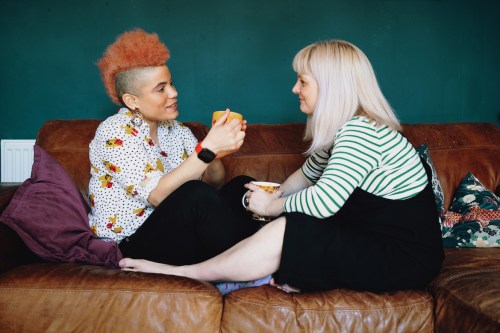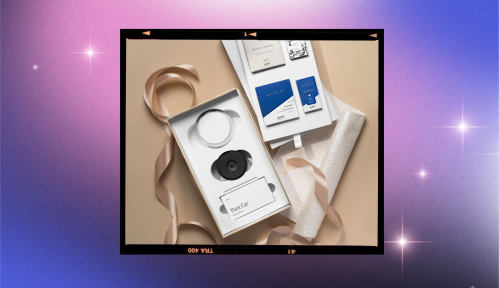There are all kinds of relationships a person can have: friendly, romantic, professional, familial, etc. But sometimes, two or more “types” of relationships blend. For example, have you ever felt super close to someone to a degree that seems stronger than friendship but not quite romantic? If so, you may have experienced a queerplatonic relationship.
“The term ‘queerplatonic’ was conceived in aromantic and asexual communities to describe ‘alterous’ relationships—or emotional connections that aren’t sexual, romantic, or strictly platonic,” says mental health counselor Laura Harris, LCMHC. “Over time, the term has evolved to include how relationships could transition.” And, that evolution extends to relationships outside the LGBTQ+ community.
“The term ‘queerplatonic’ was conceived in aromantic and asexual communities to describe emotional connections that aren’t sexual, romantic, or strictly platonic.” —mental health counselor Laura Harris, LCMHC.
With an ebb and flow that doesn’t require a “define the relationship” conversation, queerplatonic dynamics are largely characterized by a fluidity and flexibility. “Usually, societal norms dictate lines separating friendship and romance, but in queerplatonic relationships, there are no lines, and they are more flexible in nature,” Lee Phillips, EdD, a psychotherapist and certified sex and couples therapist who works with LGBTQIA+ clients. “Queerplatonic relationships cultivate mutual deep intimacy and trust between partners with a level of emotional closeness and loyalty found in a romantic relationship.”
And queerplatonic relationships may be growing in popularity, as well. According to OkCupid data, the word “queerplatonic” saw a 50 percent spike in appearances on people’s dating profiles in April 2022 compared to April 2021, says Michael Kaye, head of global communications with the company.
As for why this might be and how such relationships tend to form, Dr. Phillips suggests it has to do with people growing increasingly close with one another but not necessarily feeling a romantic or sexual pull. This, perhaps, could be a side effect of our networks becoming tighter-knit amid pandemic socializing conditions, which have challenged fringe friendships and casual dating, and given more attention to our primary relationships.
In practice, queerplatonic relationships may look like people planning out their lives together, designating one another as emergency contacts, and traveling together, for just a few examples. According to Harris, a queerplatonic relationship could also mean cohabitation, physical intimacy (without the assumption of sex), sharing finances, and coparenting. So, basically like a best friend with benefits, assuming the benefits in question aren’t sexual in nature.
That said, queerplatonic relationships can turn romantic for some people. Such simply isn’t a given or even necessarily a likely scenario (especially if you’re already in a committed romantic partnership with another person). Rather, the closeness of queerplatonic relationships tends to focus on other forms of intimacy beyond that of romantic or physical elements. The people involved “may enjoy the friendship and emotional intimacy so much more than taking it further into something more romantic or sexual,” Dr. Phillips says. And if you are in a committed romantic partnership but also have a queerplatonic relationship with someone else, remember that communication is the of the game. There is no right or wrong so long as all parties involved are comfortable and feel safe.
Ultimately, the people involved in the relationship are the ones deciphering what is and isn’t included in their specific partnership—and there are no hard-and-fast guidelines by which to abide with this framework. “The individuals engaged in that relationship intentionally define rules in what their commitment entails, rather than automatic subscription to societal norms, such as sexual intercourse or romantic obligations,” Harris says.
Oh hi! You look like someone who loves free workouts, discounts for cutting-edge wellness brands, and exclusive Well+Good content. Sign up for Well+, our online community of wellness insiders, and unlock your rewards instantly.
Sign Up for Our Daily Newsletter
Get all the latest in wellness, trends, food, fitness, beauty, and more delivered right to your inbox.
Got it, you've been added to our email list.











